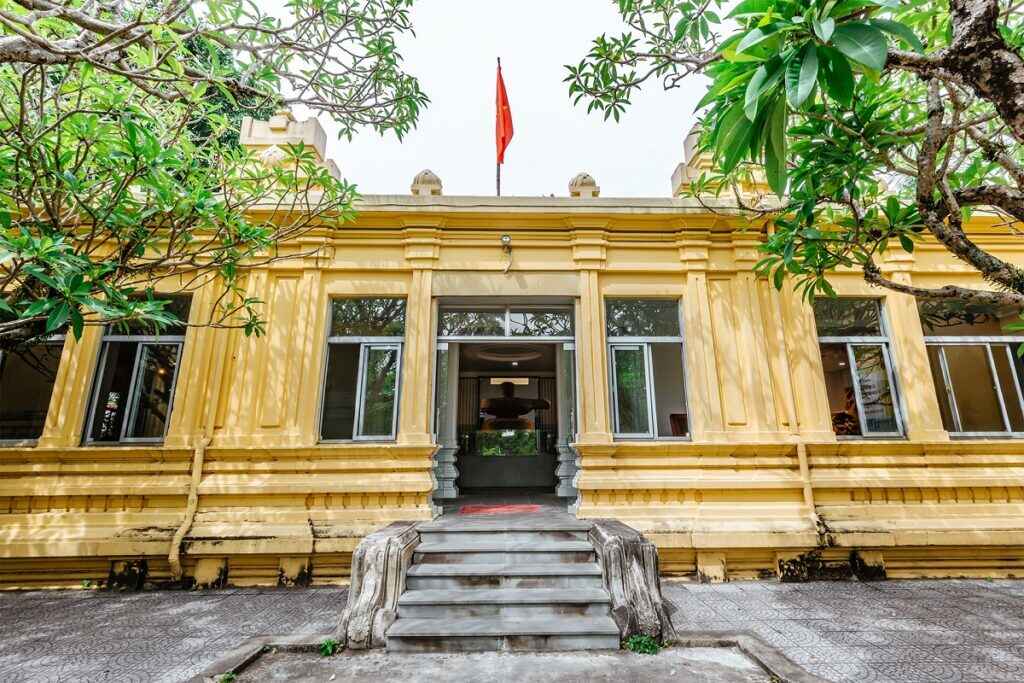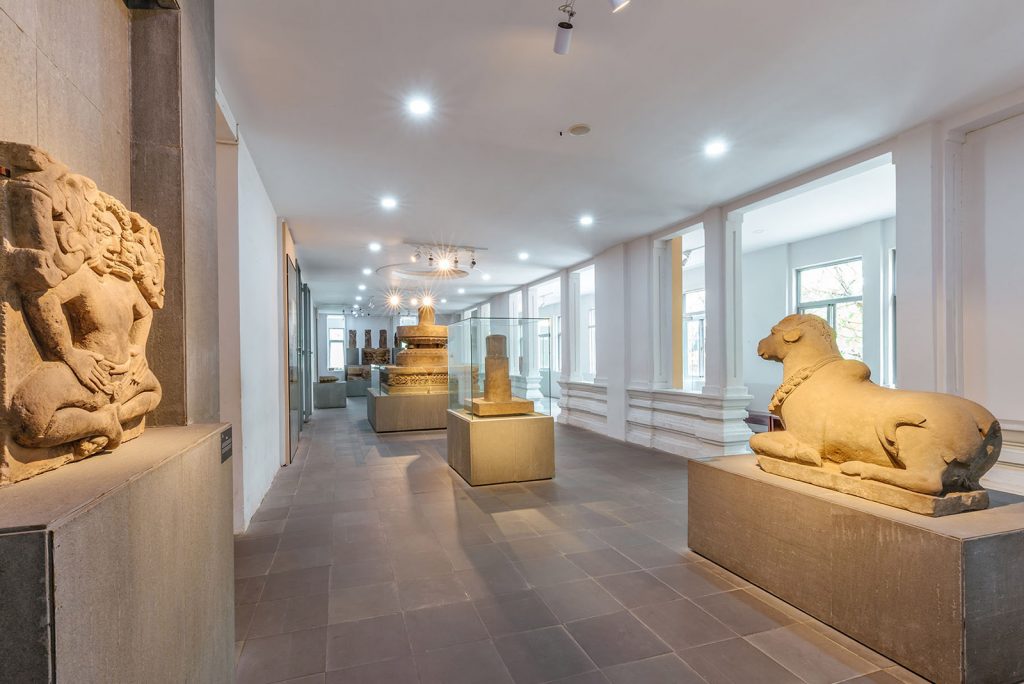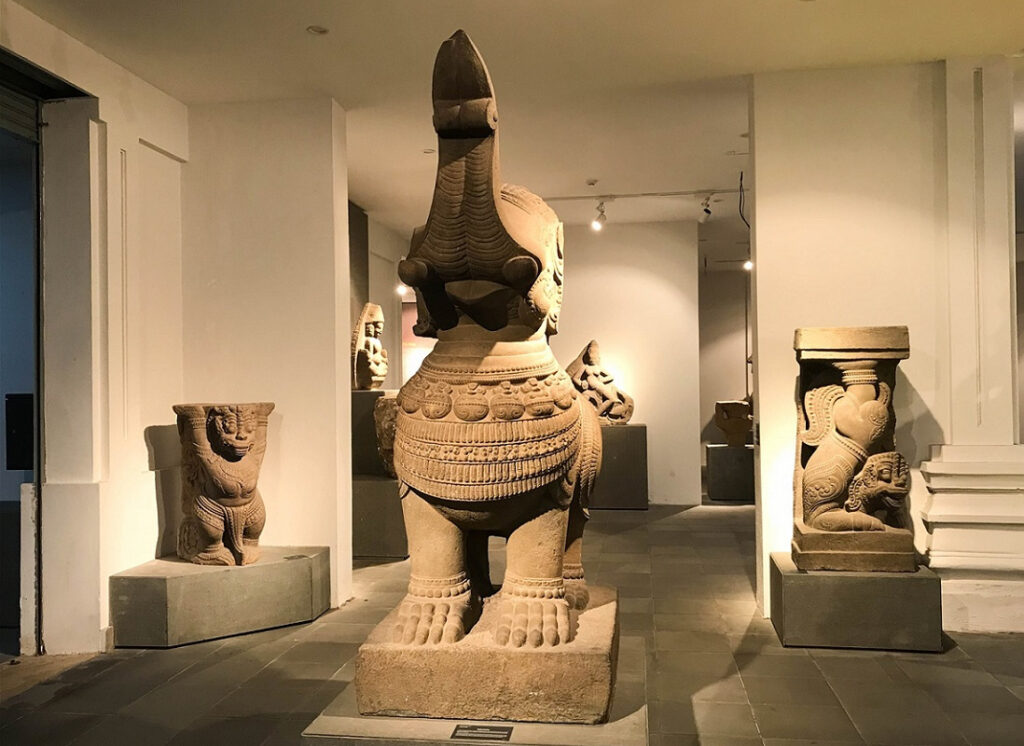Have you started your journey through time at the Museum of Cham Sculpture in Da Nang, Vietnam? If you have the opportunity to travel, don’t miss to admire the intricate art of a heroic era in Vietnam. What is so mysterious and fascinating, let’s explore with VTJ the captivating collection of ancient Cham artifacts, and discover the fascinating history of the Champa Kingdom.
 The Museum of Cham Sculpture: Uncover the Secrets of Vietnam’s Ancient Past
The Museum of Cham Sculpture: Uncover the Secrets of Vietnam’s Ancient Past
Introduction The Museum of Cham
Nestled in the heart of Da Nang, Vietnam, lies a repository of artistic and historical wonders: the Museum of Cham Sculpture. This unique museum houses the world’s largest collection of Cham sculptures, offering a fascinating glimpse into the vanished Champa Kingdom that once thrived in Southeast Asia. Whether you’re an art aficionado, a history buff, or simply seeking a captivating cultural experience, the Museum of Cham Sculpture promises a journey of discovery.
Read more: Golden Bridge Da Nang: Must-Visit Marvel, Unique Features & Costs Guide
A Journey Back in Time: The Champa Kingdom
To truly appreciate the museum’s treasures, imagine traveling back in time to the period of the Champa Kingdom. This ancient civilization flourished along Vietnam’s coastal regions from around the 2nd to the 15th centuries. The Cham people, famous for their maritime prowess and vibrant culture, established a powerful kingdom, playing an important role in Southeast Asian trade and politics.
 Museum of cham sculpture – Historical relics and cultural preservation in Vietnam
Museum of cham sculpture – Historical relics and cultural preservation in Vietnam
The Rise and Fall of an Empire
The Champa Kingdom’s history is marked by periods of both prosperity and conflict. From their early beginnings in the 2nd century, the Cham people gradually expanded their influence, reaching the height of their power between the 7th and 10th centuries. However, repeated conflicts with neighboring kingdoms, particularly the Vietnamese, eventually led to the decline and fall of the Champa civilization by the 15th century.
Religious Beliefs and Artistic Expression
Deeply intertwined with the Champa Kingdom’s rise and fall were their religious beliefs. Hinduism, particularly the worship of Shiva, played a central role in Cham society, as evidenced by the prevalence of Shiva lingams and other Hindu deities depicted in their sculptures. Buddhism, too, held a prominent place, particularly in later centuries.
This eclectic mix of religious influences found magnificent expression in Cham art and architecture, most notably in their intricate sculptures. Crafted primarily from sandstone, these sculptures served both religious and decorative purposes, adorning temples, palaces, and other important structures.
Read more: Exploring Banana Island in Hanoi: A Tranquil Escape
Exploring the Museum’s Collection
The Museum of Cham Sculpture boasts an impressive collection of over 300 original artifacts, each whispering tales of a bygone era. The sculptures, ranging in size from small figurines to towering statues, showcase the exceptional skill and artistry of Cham artisans.
Gallery Highlights
The museum’s collection is organized thematically into galleries, each focusing on a specific region or period of Cham art. Visitors can journey through galleries showcasing sculptures from Tra Kieu, My Son, Dong Duong, and Thap Mam Style – each offering a distinct glimpse into the evolution of Cham sculpture.
The Mystery of Cham Sculpture
Despite extensive research, certain aspects of Cham’s sculpture remain shrouded in mystery. The exact techniques used by Cham artisans to achieve such intricate details, particularly in their lost wax casting methods, continue to intrigue scholars today.
Preserving a Legacy
Established in 1915 during the French colonial period, the Museum of Cham Sculpture has played a vital role in protecting and preserving this invaluable heritage for future generations. The museum’s conservation efforts ensure these delicate masterpieces withstand the test of time, while its ongoing research sheds new light on the artistry and history of the Champa Kingdom.
One of those museums is the Cham Sculpture Museum located on the banks of the Han River, on the corner of Bach Dang and Trung Nu Vuong streets in Danang City. This is the largest Cham museum in the country and is the pride of the people of the coastal city. Tourists often visit here to enjoy the culture and heritage of Vietnam.
FAQs
 Cham Museum in Da Nang: address, ticket prices, opening hours
Cham Museum in Da Nang: address, ticket prices, opening hours
How much does it cost to go to the Museum of Cham Sculpture?
The opening hours of the Da Nang Sculpture Museum are from 7:30 am to 5 pm daily and the entrance ticket is 60,000 VND/person. However, there will be different discount programs depending on the time that you need to pay attention to to get the most preferential price.
What is the history of Champa Vietnam?
In 1915, the Sculpture Museum was officially built and from there, the search for collections from Cham Tower temples began from Quang Binh to Binh Dinh.
Until the end of the 19th century, the first Museum of Cham Sculpture was completed by the École Francaise d’Extreme Orient (EFEO). Initially, the building was drawn and designed by two French architects, Delaval and Auclai. Inspiration comes from classic European Gothic design and traditional Cham art.
Through many stages of development, in 2016, the Cham Museum in Danang was upgraded and more comfortable. Not only ensuring aesthetic aesthetics for visitors but also preserving treasures in the best way.
The Museum of Cham Sculpture in Da Nang offers a captivating journey through the art, history, and spirituality of the Champa Kingdom. As you wander through the galleries, gazing upon the intricate details of these ancient masterpieces, you’ll gain a newfound appreciation for the legacy of the Cham people – a legacy that continues to inspire wonder and intrigue to this day. Don’t miss the chance to experience this treasure trove of Vietnamese history and culture!




